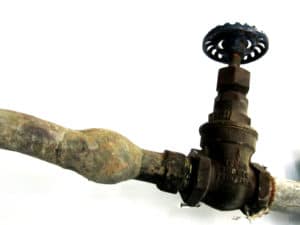ASDWA Submits Comments on Proposed Lead and Copper Rule Revisions (LCRR)
 On Monday (2/10), ASDWA submitted its comments (below) on EPA’s proposed Lead and Copper Rule Revisions (LCRR). ASDWA’s comments have four main themes:
On Monday (2/10), ASDWA submitted its comments (below) on EPA’s proposed Lead and Copper Rule Revisions (LCRR). ASDWA’s comments have four main themes:
- Get the Lead Out
- Continue to Reduce Exposure from Lead in Drinking Water
- Work to Increase Transparency and Public Education and Clarify Public Notification
- Minimize the Implementation Burden and Increase Funding for States
Getting the lead out of distribution systems across the country starts with regulatory requirements for lead service line (LSL) inventories or demonstrating “absence of LSLs.” Inventories are then followed by requirements for LSL replacement (LSLR) plans and requirements for LSL removals for all systems with LSLs. ASDWA recommended strengthening the LSLR regulatory requirements to replace a minimum of 10% over a 3 year period for any systems with LSLs and replace a minimum of 20% over 3 years for systems with a 90th percentile greater than the lead action level (AL) of 15 µg/L.
ASDWA recommended Tier 1 sampling sites at locations with LSLs, appropriate corrosion control treatment (CCT), and water quality parameter monitoring to ensure appropriate water quality is maintained, particularly when water sources or treatment processes are changed. ASDWA recommended that additional CCT testing options be included in the final LCRR. ASDWA recommended that sample site assessments (proposed as “Find-and-Fix”) be included in the final LCRR to ensure that CCT is consistent throughout the distribution system. ASDWA recommended that utilities have an “upon request,” rather than a mandatory lead testing program for schools and child care facilities.
The proposed LCRR significantly increases the complexity of the rule and the burden on staff to implement the rule. The proposed LCRR will also substantially increase the states’ data management burden. The proposed LCRR contains several early implementation activities and within each component of the proposal, new program requirements with significant tracking, reviews, and approvals. ASDWA estimated that the national total for states to implement the LCRR in its first five years is approximately 835,000 additional staff hours annually, over and above the ongoing implementation of the current LCR. The additional staff hours are a factor of 12 greater than the annual hours for ongoing LCR implementation. In its comments, ASDWA provided several recommendations that would reduce the additional burden by approximately 12%. ASDWA estimated that the proposed LCRR would take 47% of current Public Water Supply Supervision (PWSS) funding to fully implement, and that’s just for one rule. States will have to make tough decisions about how to prioritize support to existing programs to implement the requirements of the final LCRR.
These four themes will be emphasized at the hearing on EPA’s proposed LCRR by the House Subcommittee on Environment and Climate Change on Tuesday, Feburary 11th at 10:30 am EST. Cathy Tucker-Vogel, ASDWA President-Elect, will be testifying on behalf of ASDWA at that hearing.
ASDWA Cover Letter_Comments_CoSTS on Proposed LCRR – Final

